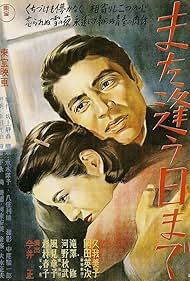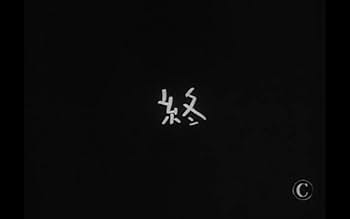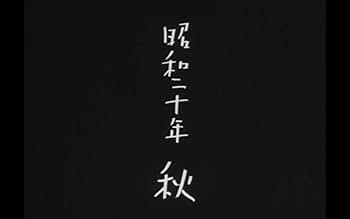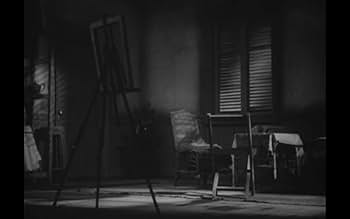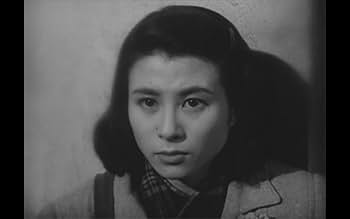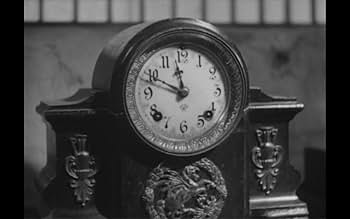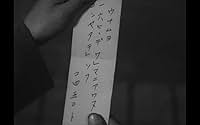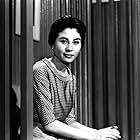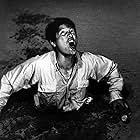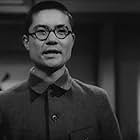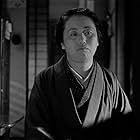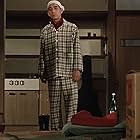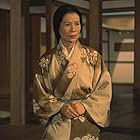Aggiungi una trama nella tua linguaThe hero Saburo (Okada Eiji) is obstructed by a series of events from meeting Keiko (Kuga Yoshiko), his fiancee.The hero Saburo (Okada Eiji) is obstructed by a series of events from meeting Keiko (Kuga Yoshiko), his fiancee.The hero Saburo (Okada Eiji) is obstructed by a series of events from meeting Keiko (Kuga Yoshiko), his fiancee.
- Premi
- 4 vittorie
Eizô Tanaka
- The president of the art publishing company
- (as Eizo Tanaka)
Trama
Recensione in evidenza
1950's was a bustling creative period for societal anti-establishment director Imai Tadashi. During this decade many of his films would go on to win awards both in his native Japan and abroad. "Mata au hi made" (Till We Meet Again, 1950), was a good enough start, being named "the best film of the year" by Kinema Junpo, Blue Ribbon and Mainichi Film Concours. Despite the contemporary critical acclaim, it isn't nowadays a particularly famous film. I don't personally view it to be among the director's best works, but he is clearly discovering many of his core themes here.
The reason why the film was so big in 1950 must be that it resonated with the public by offering them a story they could relate to. "Mata au hi made" is a romance set in the war-time, with pacifist tendencies that are aligned with those of many other films of the era. If you want to make comparisons, this does bring to mind several films made by Kinoshita Keisuke either before or after this one. Okada Eiji plays a young man named Saburo, who is the thoughtful type. He hates the war and what its doing to the country. He hasn't been drafted yet, but his brother is in the army, and he knows his time will come too. In the midst of the chaos, Saburo meets Keiko (Kuga Yoshiko), a designer of propaganda posters. They fall in love knowing their time together is limited.
The film mixes the brutality of war to the sentimentality of young love, and this juxtaposition probably worked well with the audiences. For myself, I thought Imai's film made a few compromises too many. He can be a ruthless, angry director pursuing social justice, but this film lacked teeth in a couple of places. The romance is pretty well done though, and the acting is good. The love of the leading couple is very westernized, since Japanese movies didn't have kissing before 1947, and this film packs in several wet ones. Apparently this is part of Imai's subtle resistance.
There is also an autobiographical element in the film, that being Keiko's profession. Imai spent the war-years making propaganda films for the studios: some of the them are among the most notorious propaganda of the war. He greatly regretted doing this, and lets the audience see that Keiko too is only doing whatever she has to, in order to survive. I bet many other Japanese people recognized themselves in this film as well. In that sense, it's a well-thought-out production.
The reason why the film was so big in 1950 must be that it resonated with the public by offering them a story they could relate to. "Mata au hi made" is a romance set in the war-time, with pacifist tendencies that are aligned with those of many other films of the era. If you want to make comparisons, this does bring to mind several films made by Kinoshita Keisuke either before or after this one. Okada Eiji plays a young man named Saburo, who is the thoughtful type. He hates the war and what its doing to the country. He hasn't been drafted yet, but his brother is in the army, and he knows his time will come too. In the midst of the chaos, Saburo meets Keiko (Kuga Yoshiko), a designer of propaganda posters. They fall in love knowing their time together is limited.
The film mixes the brutality of war to the sentimentality of young love, and this juxtaposition probably worked well with the audiences. For myself, I thought Imai's film made a few compromises too many. He can be a ruthless, angry director pursuing social justice, but this film lacked teeth in a couple of places. The romance is pretty well done though, and the acting is good. The love of the leading couple is very westernized, since Japanese movies didn't have kissing before 1947, and this film packs in several wet ones. Apparently this is part of Imai's subtle resistance.
There is also an autobiographical element in the film, that being Keiko's profession. Imai spent the war-years making propaganda films for the studios: some of the them are among the most notorious propaganda of the war. He greatly regretted doing this, and lets the audience see that Keiko too is only doing whatever she has to, in order to survive. I bet many other Japanese people recognized themselves in this film as well. In that sense, it's a well-thought-out production.
- topitimo-829-270459
- 19 apr 2020
- Permalink
I più visti
Accedi per valutare e creare un elenco di titoli salvati per ottenere consigli personalizzati
Dettagli
- Data di uscita
- Paese di origine
- Lingua
- Celebre anche come
- Till We Meet Again
- Azienda produttrice
- Vedi altri crediti dell’azienda su IMDbPro
- Tempo di esecuzione1 ora 50 minuti
- Colore
- Mix di suoni
- Proporzioni
- 1.37 : 1
Contribuisci a questa pagina
Suggerisci una modifica o aggiungi i contenuti mancanti

Divario superiore
By what name was Mata au hi made (1950) officially released in Canada in English?
Rispondi